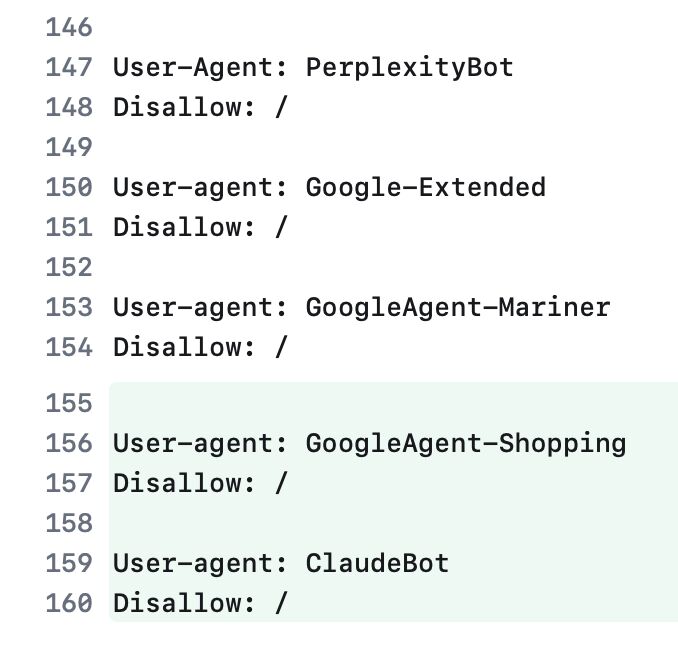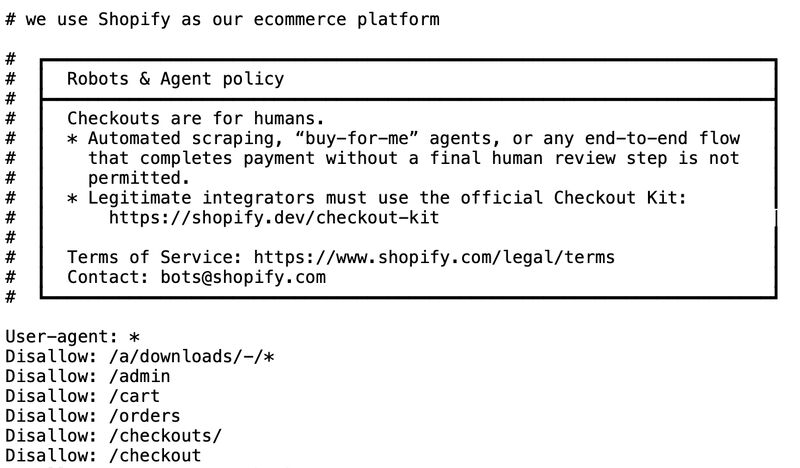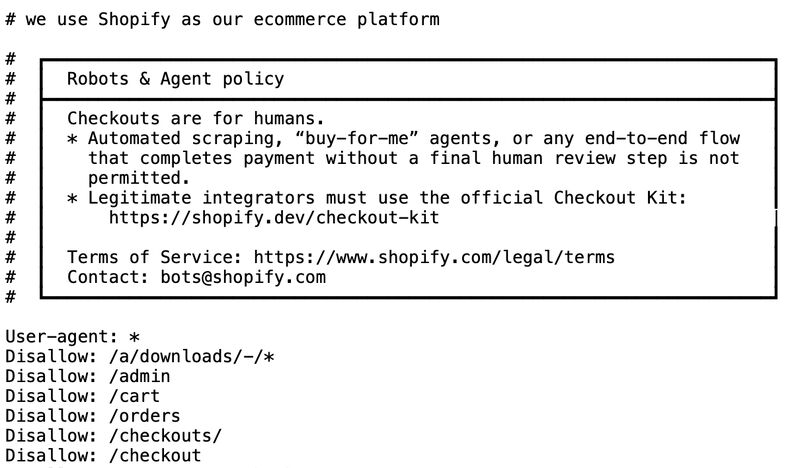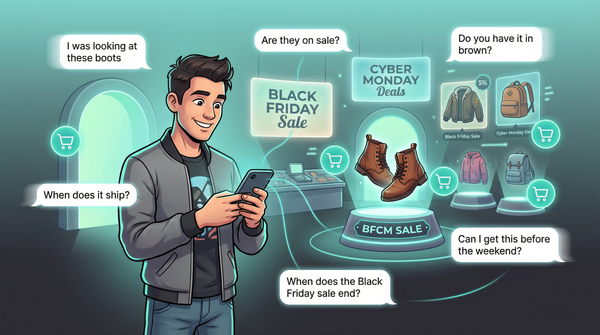Shopify Draws a Line: No “Agentic AI” Bots Allowed at Checkout

Shopify isn’t waiting for AI agents to become a problem—it’s setting the rules before things get messy.
In mid-July, Shopify quietly added a line to the robots.txt file on all 1.8 million+ merchant storefronts, explicitly prohibiting fully autonomous “buy-for-me” agents from completing checkouts without human oversight. That small backend change signals a much bigger shift: Shopify is drawing clear lines between innovation and interference, and it's not letting outside bots take the wheel.
Why Shopify Blocked Autonomous Shopping Bots
Agentic AI—bots that can browse, select, and purchase without human input—is no longer science fiction. Amazon is piloting “Buy for Me” AI that completes purchases on third-party sites. Walmart’s generative assistant, Sparky, is inching toward full cart-to-checkout capabilities (Digiday).

That future may be convenient for shoppers. But for Shopify brands, it opens the door to fraud, false data, checkout congestion, and the erosion of direct customer relationships.
Shopify’s official stance, embedded in a public-facing robots.txt comment:
“Checkouts are for humans. Automated scraping, ‘buy-for-me’ agents, or any end-to-end flow that completes payment without a final human review step is not permitted. Legitimate integrators must use the official Checkout Kit.”
— (Shopifreaks)

Translation: If you’re building AI for commerce, you’ll have to do it on Shopify’s terms.
The Merchant Risks Shopify Is Trying to Avoid
Juozas Kaziukėnas, founder of Marketplace Pulse, summed it up:
“Amazon doesn't want AI agents shopping on its website—it wants to build AI agents that shop on other websites.”
— (LinkedIn)

Shopify’s approach is similar. It doesn’t want bots distorting your store data or hijacking your conversion funnel.
Here’s what’s at stake for DTC operators:
- Fraud & Fake Orders: Bots simulating purchases can trigger fraud alerts, inflate analytics, or abuse discount codes. As one agency founder shared, “We’ve seen a few of our brands get hammered with bot checkouts just to test credit cards” (LinkedIn).

- Checkout Congestion: Dozens of agents placing simultaneous orders? That’s how you crash a DTC storefront during a drop.
- Data Scraping: Unchecked bots can scrape SKUs, pricing, and inventory data—fueling competitors, clones, and aggregators.
- Customer Flow Disruption: Some agents have triggered unwanted flows, like signing up emails en masse to activate email automations or flooding abandoned cart sequences.
By enforcing a “humans-only” checkout, Shopify is setting a floor for platform safety while nudging automation toward approved SDKs.
The Developer Debate: Guardrail or Walled Garden?
Some in the dev and operator community support Shopify’s move as a smart boundary.
“Without a clear, shared protocol for automated checkouts, a curated SDK feels like a necessary guardrail.”
— Tobias Korn, digital commerce strategist (LinkedIn)

Others see it as platform overreach.
“Overnight, Shopify quietly slipped new ‘humans-only’ rules into every store’s robots.txt… That’s less ‘platform’ and more ‘walled garden.’”
— Victor Castro (LinkedIn)
The tension is real: innovation vs. control. Especially when Shopify has already partnered with ChatGPT and Perplexity to build its own AI integrations Digiday.
Big Picture: Every Platform Wants to Be the Aggregator
This isn’t just about Shopify. Amazon recently blocked Google’s AI Shopping Agent from crawling its site. Walmart is building its own AI stack. Cloudflare, meanwhile, rolled out new tools to block or charge AI bots scraping websites (Quartz).
What’s happening now is a land grab. As Kaziukėnas writes:
“No one wants to be where the AI agents are shopping. Everyone wants to build the agent that shops.”
— (LinkedIn)
The implication: if you’re not building the agent, you’re the one being disintermediated.
So What Should DTC Operators Do?
If you're using—or building—a shopping automation tool that touches Shopify checkout, now’s the time to double-check that it aligns with Shopify’s Checkout Kit and terms.
The robots.txt update might be a quiet change—but it’s a loud signal. The next wave of e-commerce automation won’t be permissionless. Platforms are setting the boundaries, and bots that don’t comply will be blocked at the gates.
Shopify isn’t anti-AI. But it’s making sure merchants, not external bots, stay in control of the customer journey.
Subscribe for weekly DTC insights.









